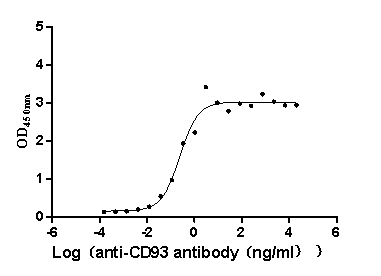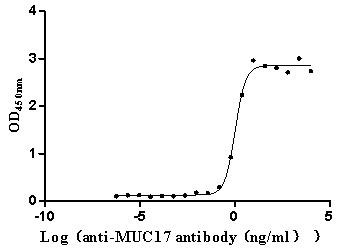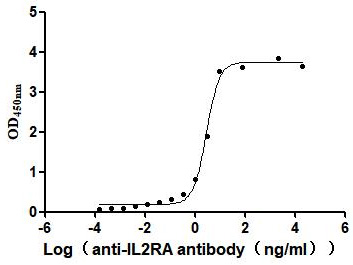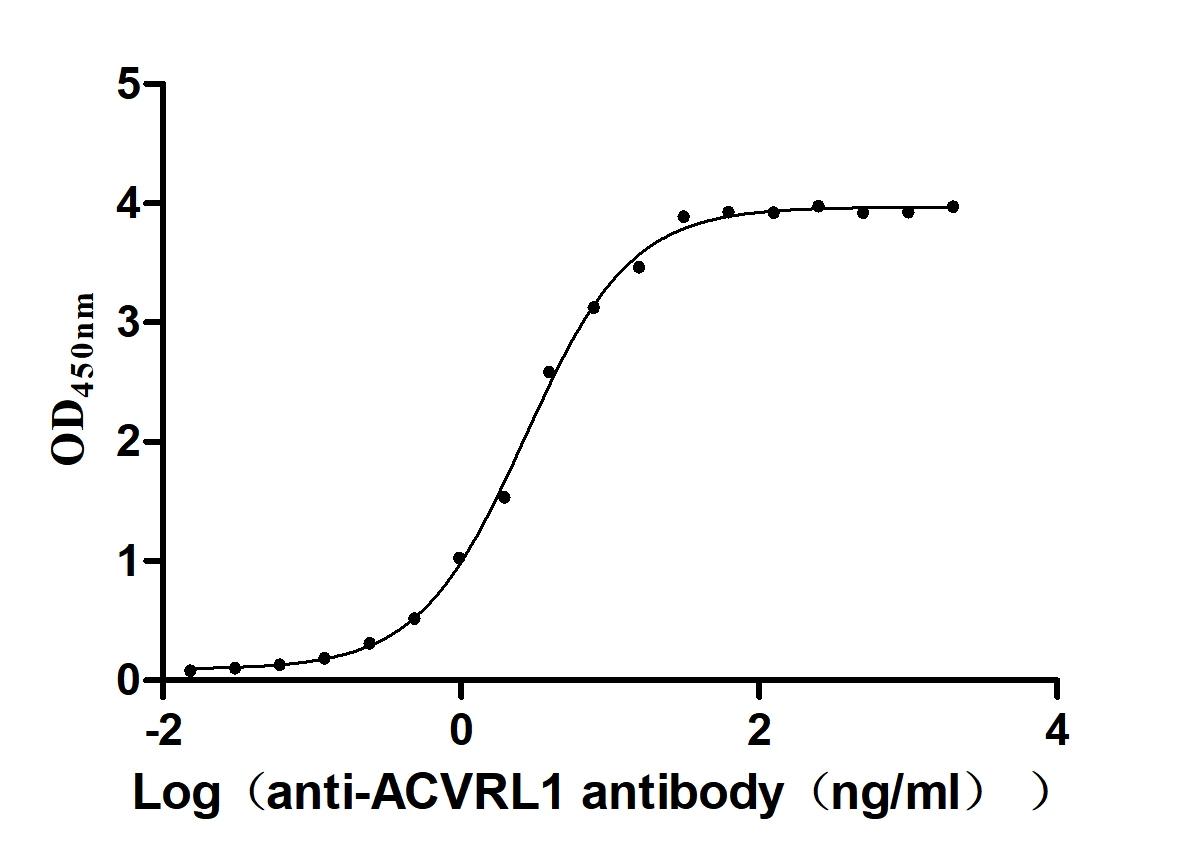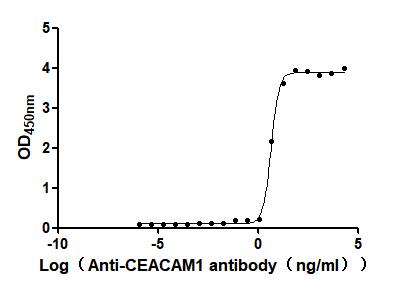Recombinant Mouse Transient receptor potential cation channel subfamily M member 2 (Trpm2), partial
-
中文名稱:小鼠Trpm2重組蛋白
-
貨號:CSB-YP856324MO
-
規(guī)格:
-
來源:Yeast
-
其他:
-
中文名稱:小鼠Trpm2重組蛋白
-
貨號:CSB-EP856324MO
-
規(guī)格:
-
來源:E.coli
-
其他:
-
中文名稱:小鼠Trpm2重組蛋白
-
貨號:CSB-EP856324MO-B
-
規(guī)格:
-
來源:E.coli
-
共軛:Avi-tag Biotinylated
E. coli biotin ligase (BirA) is highly specific in covalently attaching biotin to the 15 amino acid AviTag peptide. This recombinant protein was biotinylated in vivo by AviTag-BirA technology, which method is BriA catalyzes amide linkage between the biotin and the specific lysine of the AviTag.
-
其他:
-
中文名稱:小鼠Trpm2重組蛋白
-
貨號:CSB-BP856324MO
-
規(guī)格:
-
來源:Baculovirus
-
其他:
-
中文名稱:小鼠Trpm2重組蛋白
-
貨號:CSB-MP856324MO
-
規(guī)格:
-
來源:Mammalian cell
-
其他:
產(chǎn)品詳情
-
純度:>85% (SDS-PAGE)
-
基因名:
-
Uniprot No.:
-
別名:Trpm2; Ltrpc2; Trpc7; Transient receptor potential cation channel subfamily M member 2; Long transient receptor potential channel 2; LTrpC-2; LTrpC2; Transient receptor potential channel 7; TrpC7
-
種屬:Mus musculus (Mouse)
-
蛋白長度:Partial
-
蛋白標(biāo)簽:Tag?type?will?be?determined?during?the?manufacturing?process.
The tag type will be determined during production process. If you have specified tag type, please tell us and we will develop the specified tag preferentially. -
產(chǎn)品提供形式:Lyophilized powder
Note: We will preferentially ship the format that we have in stock, however, if you have any special requirement for the format, please remark your requirement when placing the order, we will prepare according to your demand. -
復(fù)溶:We recommend that this vial be briefly centrifuged prior to opening to bring the contents to the bottom. Please reconstitute protein in deionized sterile water to a concentration of 0.1-1.0 mg/mL.We recommend to add 5-50% of glycerol (final concentration) and aliquot for long-term storage at -20℃/-80℃. Our default final concentration of glycerol is 50%. Customers could use it as reference.
-
儲存條件:Store at -20°C/-80°C upon receipt, aliquoting is necessary for mutiple use. Avoid repeated freeze-thaw cycles.
-
保質(zhì)期:The shelf life is related to many factors, storage state, buffer ingredients, storage temperature and the stability of the protein itself.
Generally, the shelf life of liquid form is 6 months at -20°C/-80°C. The shelf life of lyophilized form is 12 months at -20°C/-80°C. -
貨期:Delivery time may differ from different purchasing way or location, please kindly consult your local distributors for specific delivery time.Note: All of our proteins are default shipped with normal blue ice packs, if you request to ship with dry ice, please communicate with us in advance and extra fees will be charged.
-
注意事項(xiàng):Repeated freezing and thawing is not recommended. Store working aliquots at 4°C for up to one week.
-
Datasheet :Please contact us to get it.
靶點(diǎn)詳情
-
功能:Nonselective, voltage-independent cation channel that mediates Na(+) and Ca(2+) influx, leading to increased cytoplasmic Ca(2+) levels. Functions as ligand-gated ion channel. Binding of ADP-ribose to the cytoplasmic Nudix domain causes a conformation change; the channel is primed but still requires Ca(2+) binding to trigger channel opening. Extracellular calcium passes through the channel and increases channel activity. Also contributes to Ca(2+) release from intracellular stores in response to ADP-ribose. Plays a role in numerous processes that involve signaling via intracellular Ca(2+) levels. Besides, mediates the release of lysosomal Zn(2+) stores in response to reactive oxygen species, leading to increased cytosolic Zn(2+) levels. Activated by moderate heat (35 to 40 degrees Celsius). Activated by intracellular ADP-ribose, beta-NAD (NAD(+)) and similar compounds, and by oxidative stress caused by reactive oxygen or nitrogen species. The precise physiological activators are under debate; the true, physiological activators may be ADP-ribose and ADP-ribose-2'-phosphate. Activation by ADP-ribose and beta-NAD is strongly increased by moderate heat (35 to 40 degrees Celsius). Likewise, reactive oxygen species lower the threshold for activation by moderate heat (37 degrees Celsius). Plays a role in mediating behavorial and physiological responses to moderate heat and thereby contributes to body temperature homeostasis. Plays a role in insulin secretion, a process that requires increased cytoplasmic Ca(2+) levels. Required for normal IFNG and cytokine secretion and normal innate immune immunity in response to bacterial infection. Required for normal phagocytosis and cytokine release by macrophages exposed to zymosan (in vitro). Plays a role in dendritic cell differentiation and maturation, and in dendritic cell chemotaxis via its role in regulating cytoplasmic Ca(2+) levels. Plays a role in the regulation of the reorganization of the actin cytoskeleton and filopodia formation in response to reactive oxygen species via its function in increasing cytoplasmic Ca(2+) and Zn(2+) levels. Confers susceptibility to cell death following oxidative stress.
-
基因功能參考文獻(xiàn):
- Results reveal a novel, potentially druggable signalling pathway for FFA-induced beta-cell death. The cascade involves NOX-2-dependent production of ROS, activation of TRPM2 channels, rise in mitochondrial Zn(2+), Drp-1 recruitment and abnormal mitochondrial fission. PMID: 28753206
- High TRPM2 to trigger lysosomal membrane permeabilization and Zn(2+)-mediated mitochondrial fission. PMID: 28765513
- Trpm2 might promote hyperinflammation in Down Syndrome. PMID: 28970008
- Studied the role of transient receptor potential melastatin 2 (TRPM2) in activating caspase-1 and caspase-1-dependent pyroptosis in mouse BMDMs. Found TRPM2 knockout caused higher caspase-1 activation and pyrotopsis. PMID: 29250536
- Transient receptor potential melastatin-2 (TRPM2) in pituitary nerve terminals plays a role in oxytocin release. Temperature- enhanced oxytocin release by CD38 and TRPM2. TRPM2 might be involved in the process of CD38-regulated oxytocin release. PMID: 27348016
- this study shows that TRPM2 ion channels regulate macrophage polarization and gastric inflammation during Helicobacter pylori infection PMID: 27435104
- Overexpression of TRPM2 channel prevented neutrophil transendothelial migration and vascular injury. PMID: 28790198
- These findings of this study suggest that TRPM2 channels play an essential role in mediating hypoxic-ischemic brain injury in neonatal mice. PMID: 28668375
- TRPM2 regulates phagosomal acidification, and is essential for the bacterial killing function of macrophages. PMID: 28082421
- Lysophosphatidylcholine induces intracellular Ca(2+) influx and increases phosphorylation of p38 MAPK via TRPM2, which in turn activates microglia. PMID: 28223219
- The current study demonstrated that a physiological concentration of adrenaline attenuates insulin release via coupling of alpha2A-adrenoceptor to cAMP/TRPM2 signaling. PMID: 28028077
- Trpm2 does not seem to play a major role in myeloid leukemogenesis. Additionally, loss of Trpm2 does not augment the cytotoxicity of standard AML chemotherapeutic agents. PMID: 27033163
- TRPM2 channels contribute to visceral nociception in response to noxious stimuli under normal conditions and visceral hypersensitivity in pathological conditions. PMID: 27616276
- this study demonstrates that the ion channel TRPM] is a temperature sensor in a subpopulation of hypothalamic neurons. PMID: 27562954
- Data show that macrophages from young mice showed lower transient receptor potential melastatin 2 (TRPM2) expression than those from senescent mice and had lower viability after silica nanoparticles (NPs) exposure than those from senescent ones. PMID: 26656285
- TRPM2 activation is likely to be mediated by ADP-ribose production via PARP pathway PMID: 26600069
- mice in which TRPM2 had been genetically deleted showed a striking deficit in their sensation of non-noxious warm temperatures, consistent with the idea that TRPM2 initiates a 'warm' signal which drives cool-seeking behaviour PMID: 27533035
- findings provide compelling evidence that F. tularensis catalase restricts reactive oxygen species to temper macrophage TRPM2-mediated Ca(2+) signaling and limit host immune function. PMID: 26679996
- TRPM2 plays roles in a wide range of pathological pain models based on peripheral and central neuroinflammation, rather than physiological nociceptive pain. PMID: 25837919
- The findings provide evidence for a mechanism by which Abeta impairs neurovascular regulation and suggest that TRPM2 channels are a potential therapeutic target to counteract cerebrovascular dysfunction in Alzheimer's dementia. PMID: 25351853
- Neointimal hyperplasia was substantially reduced in Trpm2 knockout mice. PMID: 25857618
- endogenous redox signals in pancreatic beta cells elevate insulin secretion via TRPM2 sensitization and activity at body temperature PMID: 25817999
- These results provide the first evidence to show a critical role for TRPM2 channel activation during reperfusion in the delayed increase in the [Zn(2+)]c and CA1 pyramidal neuronal death. PMID: 25429618
- Postischemic neovascularization in mice required reactive oxygen species generation in endothelial cells and resultant TRPM2 activation. PMID: 25675998
- neurons from the brain of Trpm2-deficient mice have significantly longer neurites with a greater number of spines. PMID: 24413888
- Ca2+ entry via Trpm2 channels was essential for maintenance of mitochondrial function in the heart. PMID: 25576627
- TRPM2-mediated, Ca+-potentiated Zn2+ release underlies pancreatic Beta-cell death. PMID: 25562606
- C(60)HyFn administration significantly decreased serum levels of homocysteine and TRPM2 mRNA levels in HHcy + C(60)HyFn group. Whereas, HHcy-treatment and C(60)HyFn administration did not change the expression of TRPM7. PMID: 24646197
- Following kidney ischemia, TRPM2 promoted RAC1 activation. PMID: 25295536
- The detrimental role of TRPM2 in stroke primarily depends on its role in activating peripheral immune cells. PMID: 25236871
- study data demonstrate a protective role of TRPM2 in controlling bacterial clearance during polymicrobial sepsis possibly by regulating HO-1 expression PMID: 24781495
- TRPM2 channels protect the heart from I/R injury by ameliorating mitochondrial dysfunction and reducing reactive oxygen species levels PMID: 24492610
- TRPM2 channels are essential in the mechanism of acetaminophen-induced hepatocellular death. PMID: 24569808
- TRPM2 plays an important role in the infiltration of peripheral immune cells, particularly macrophages, into the spinal cord, rather than the infiltration of peripheral immune cells into the injured nerves and activation of spinal-resident microglia. PMID: 23935822
- It is a reactive oxygen species sensor and plays a role in spinal infiltration of immune cells in peripheral nerve injury induced neuropathic pain.[review] PMID: 24212589
- TRPM2 may play a key role in degranulation by modulating intracellular Ca2+ in mucosal mast cells. PMID: 23371039
- TRPM2 plays a role in downregulating prosurvival signals in central neurons and may prevent ischemic damage. PMID: 24174660
- Activation of the enzyme poly (ADP-ribose) polymerase-1 (PARP-1) is responsible for male-specific TRPM2 channel activation and neuronal injury. PMID: 23801245
- targeting TRPM2 may be effective for the treatment of NLRP3 inflammasome-associated inflammatory disorders PMID: 23511475
- These results show that the TRPM2 channel in macrophage cells functions as a cell surface calcium permeable channel that mediates calcium influx and signaling, but has a limited role in cell death. PMID: 23596170
- Accumulation of neutrophils in the reperfused area mediated by TRPM2 activation is likely to play a crucial role in myocardial ischaemia/reperfusion (I/R) injury. PMID: 23129587
- TRPM2 is activated by irradiation, via PARP1 activation, and contributes to irreversible loss of salivary gland function. PMID: 23443543
- These findings provide strong evidence for TRPM2 as a target for protection against cerebral ischemia in male brain and helps define a molecular cell death pathway that is differentially engaged in male and female neurons. PMID: 23041043
- Findings strongly suggest that TRPM2 channel mediates cellular Ca(2+) overload in response to H(2)O(2) and contribute to oxidant-induced apoptotic cell death in vascular endothelial cells. PMID: 22916222
- Glutathione plays a physiologically relevant role in the regulation of TRPM2 currents in hippocampal pyramidal neurons. PMID: 22487454
- The ion channel transient receptor potential melastatin-2 does not play a role in inflammatory mouse models of chronic obstructive pulmonary diseases. PMID: 22475739
- Data suggest that TRPM2 channels play a key role in hippocampal synaptic plasticity. PMID: 22188973
- The juvenile myoclonic epilepsy-related protein EFHC1 interacts with the redox-sensitive TRPM2 channel linked to cell death. PMID: 22226147
- Our findings identify a novel role of TRPM2 Ca(2+) channel in the regulation of energy expenditure, inflammation, and insulin resistance PMID: 22275755
- TRPM2 expressed in macrophages and microglia aggravates peripheral and spinal pronociceptive inflammatory responses. PMID: 22423113
顯示更多
收起更多
-
亞細(xì)胞定位:Cell membrane; Multi-pass membrane protein. Perikaryon. Cell projection. Cytoplasmic vesicle. Lysosome.
-
蛋白家族:Transient receptor (TC 1.A.4) family, LTrpC subfamily, TRPM2 sub-subfamily
-
組織特異性:Detected in the preoptic area of the hypothalamus, a brain area involved in body temperature control. Detected in beta-cells in pancreas islets (at protein level). Detected in brain cortex, striatum, hippocampus CA1, CA2 and CA3 layers, and in the Purkinj
-
數(shù)據(jù)庫鏈接:
Most popular with customers
-
Recombinant Human B-lymphocyte antigen CD20 (MS4A1)-VLPs (Active)
Express system: Mammalian cell
Species: Homo sapiens (Human)
-
Recombinant Rabbit Tissue factor pathway inhibitor (TFPI) (Active)
Express system: Mammalian cell
Species: Oryctolagus cuniculus (Rabbit)
-
Recombinant Mouse Claudin-18.2 (Cldn18.2)-VLPs (Active)
Express system: Mammalian cell
Species: Mus musculus (Mouse)
-
Recombinant Macaca fascicularis CD93 molecule (CD93), partial (Active)
Express system: Mammalian cell
Species: Macaca fascicularis (Crab-eating macaque) (Cynomolgus monkey)
-
Recombinant Human Mucin-17 (MUC17), partial (Active)
Express system: Mammalian cell
Species: Homo sapiens (Human)
-
Recombinant Human Interleukin-2 receptor subunit alpha (IL2RA), partial (Active)
Express system: Mammalian cell
Species: Homo sapiens (Human)
-
Recombinant Human Serine/threonine-protein kinase receptor R3 (ACVRL1), partial (Active)
Express system: Baculovirus
Species: Homo sapiens (Human)
-
Express system: Mammalian cell
Species: Homo sapiens (Human)


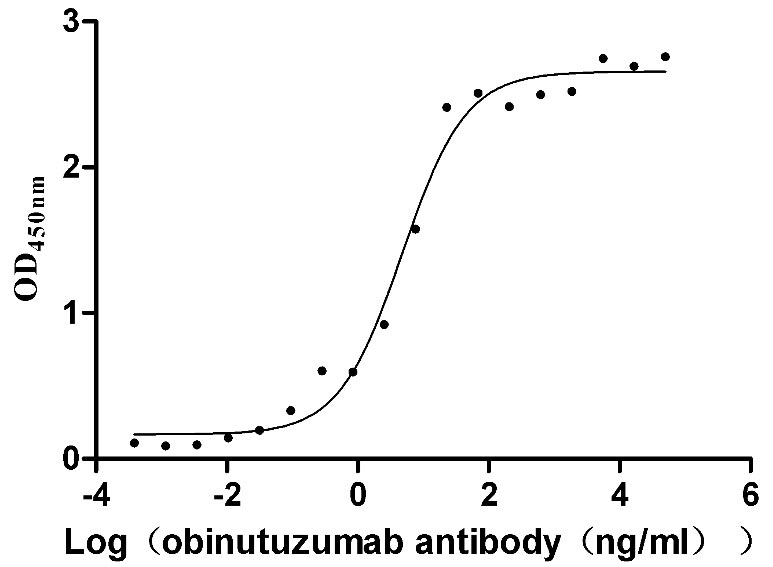
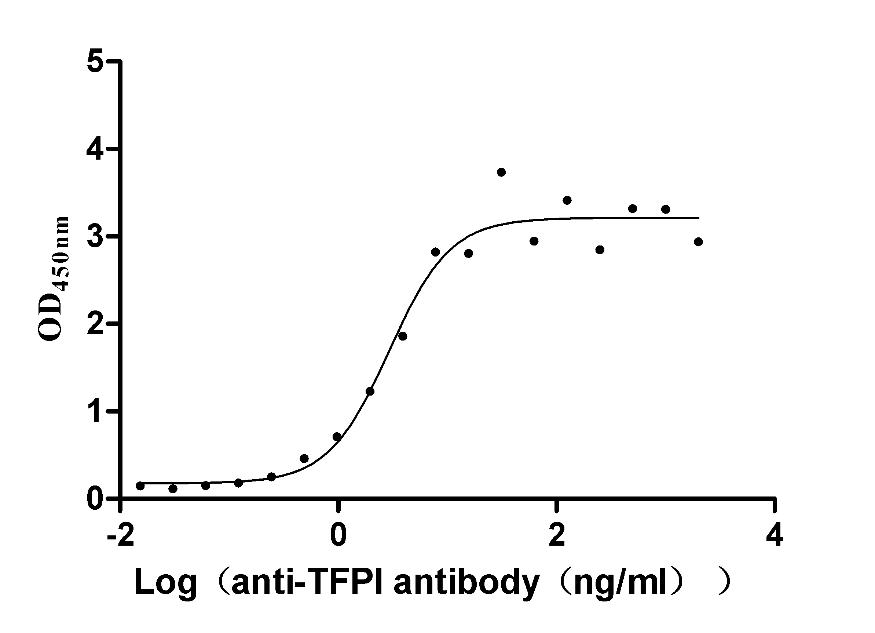
-AC1.jpg)
